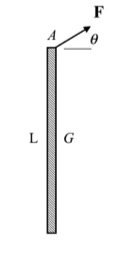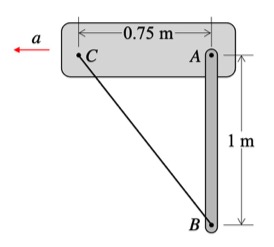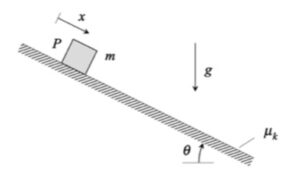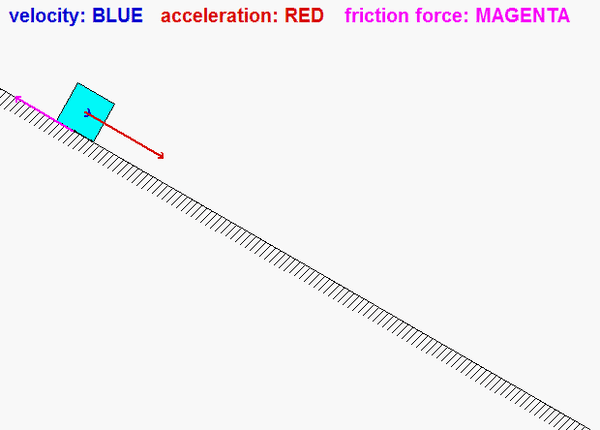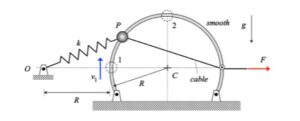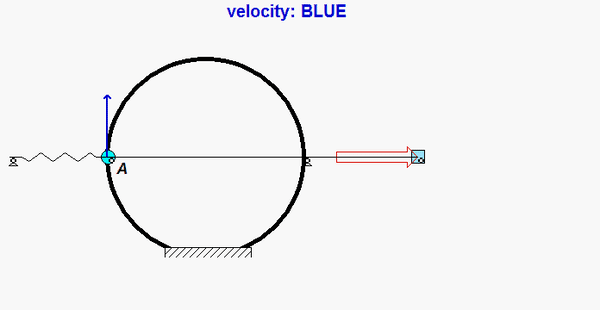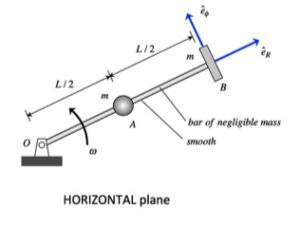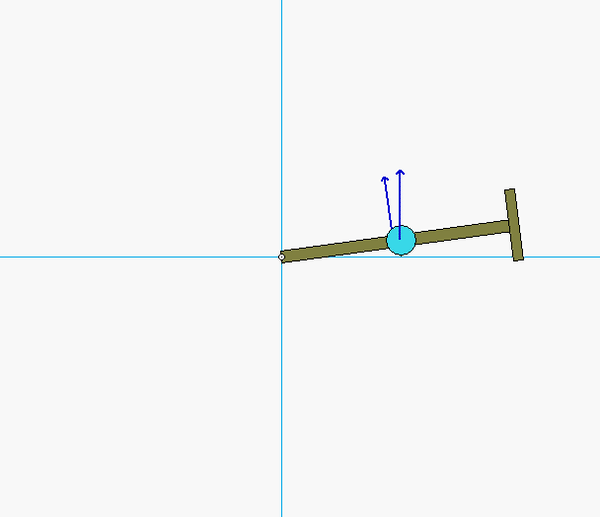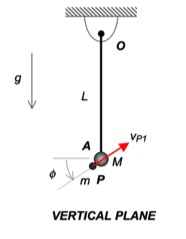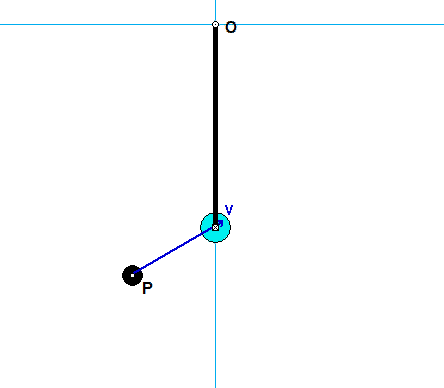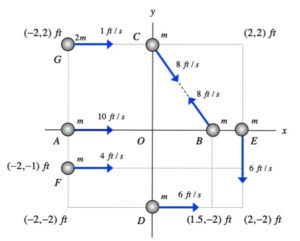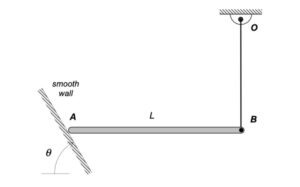
Discussion and hints:

Recall the following four-step plan outline in the lecture book and discussed in lecture:
Step 1: FBDs
Draw a free body diagram of the bar.
Step 2: Kinetics (Newton/Euler)
Write down the Newton/Euler equations for the bar using your FBD above. Take care in choosing the reference point for your moment equation. In order to use the "short form" of Euler's equation, this point should be either a fixed point or the body's center of mass. For this problem, there are no fixed points.
Step 3: Kinematics
The paths of A and B are known: A travels on a straight path aligned with the inclined wall, and B travels on a circular path centered at O. Since the bar is released from rest, you know that the speeds of A and B are zero - therefore, the centripetal component of acceleration for each point is zero. This leaves the acceleration of points A and B tangent to their paths. (You can see this from the animation above for the instant when AB is horizontal.) It is recommended that you use two kinematics equations: one relating points A and B, and the other relating the center of mass G of the bar to either A or B.
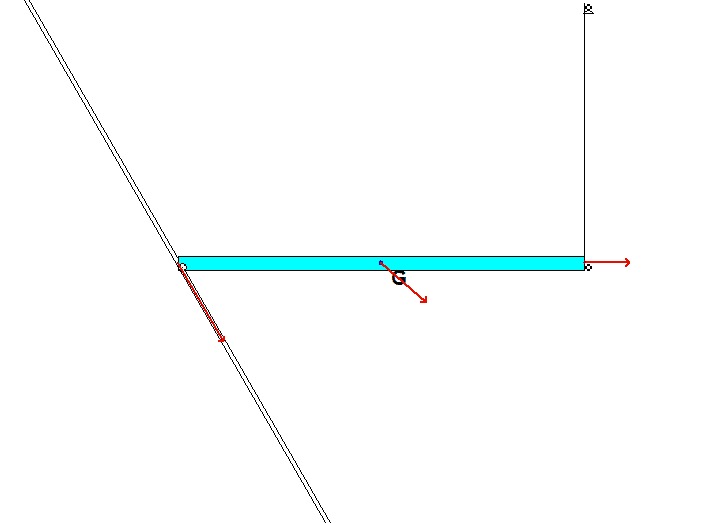
Step 4: Solve
Solve your equations above for the tension in cable BO.
Any questions?
